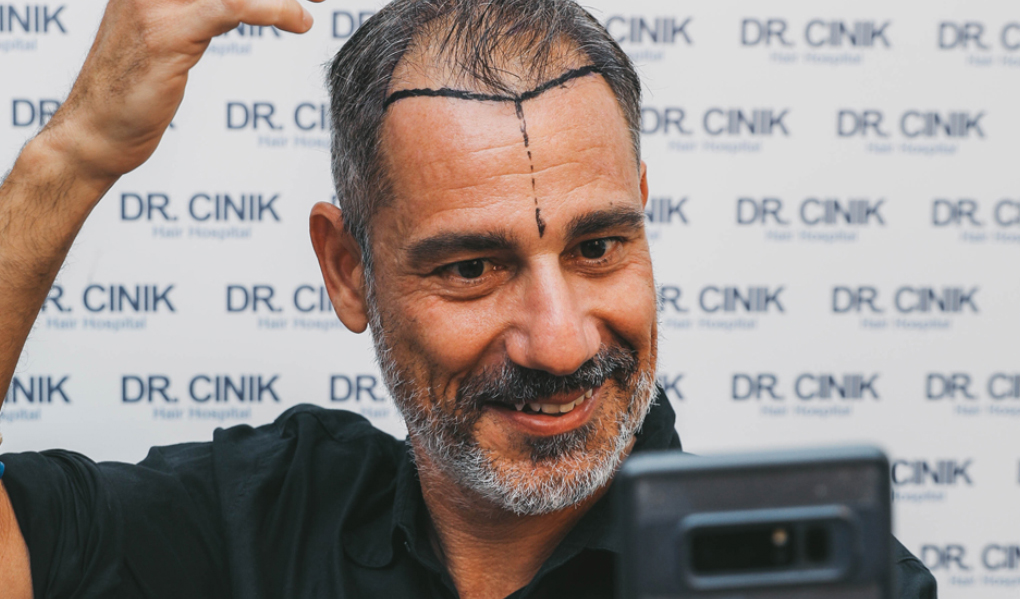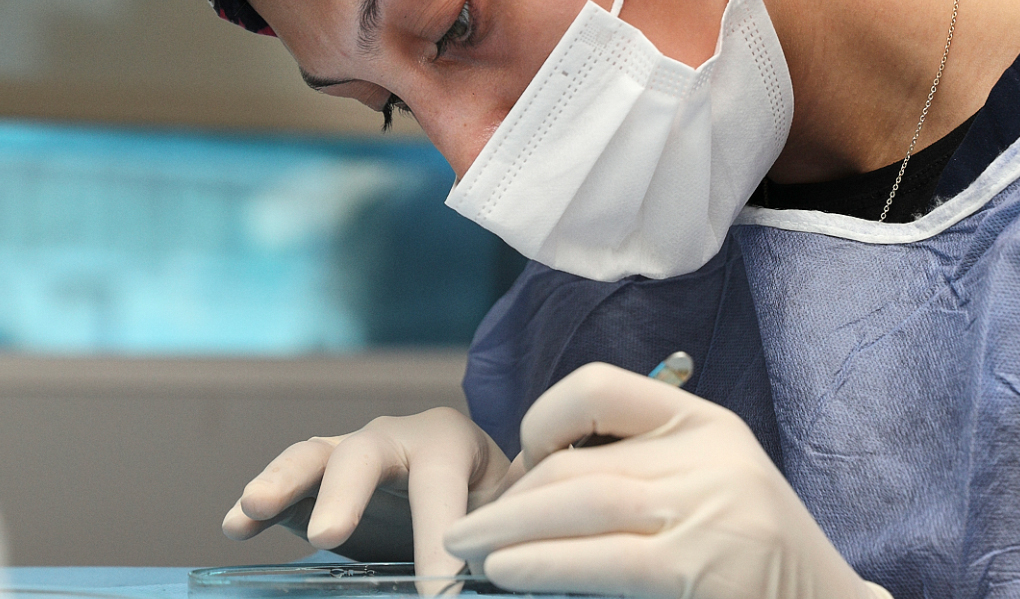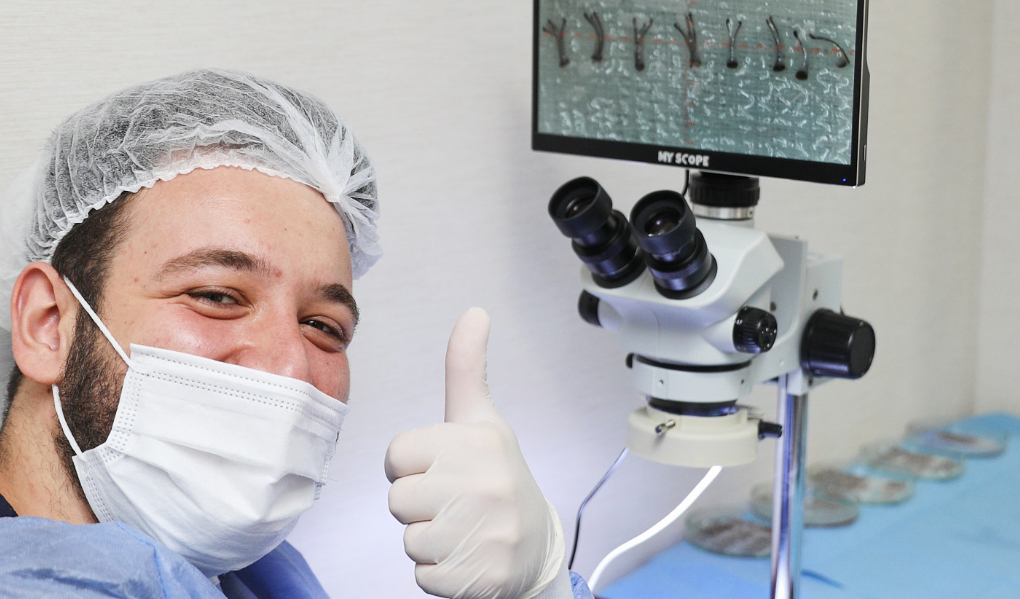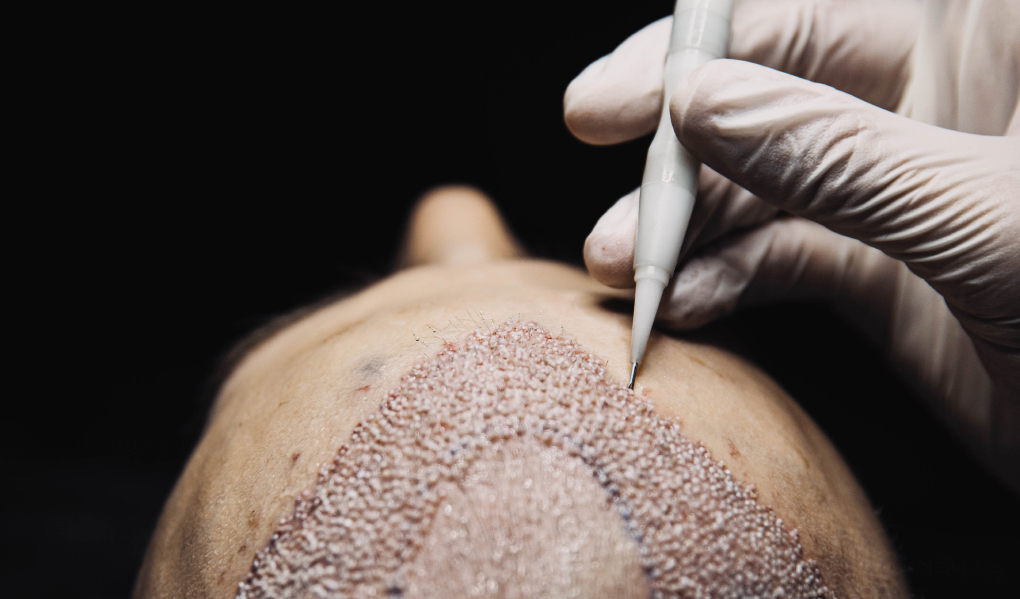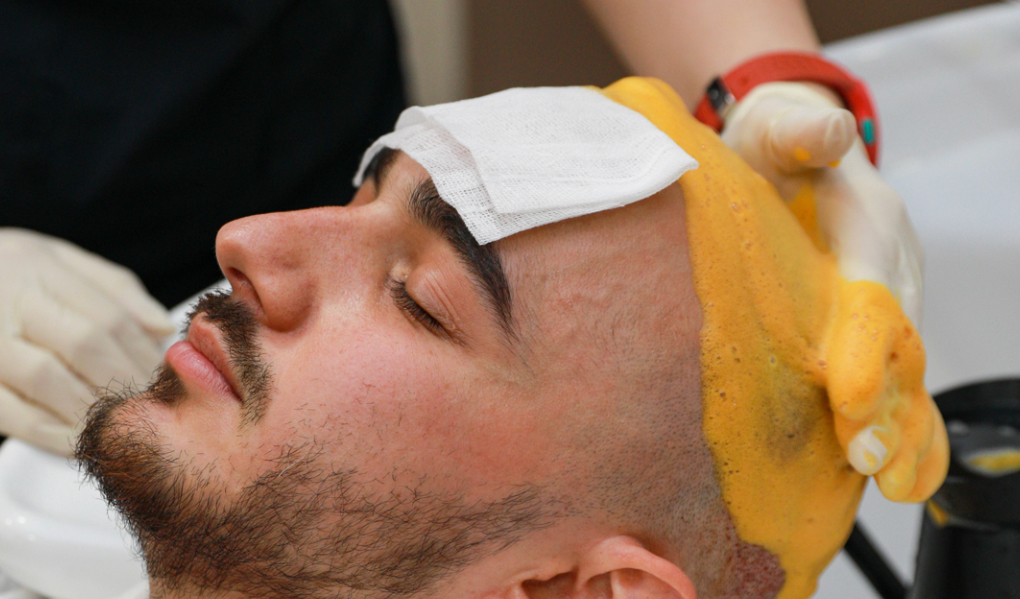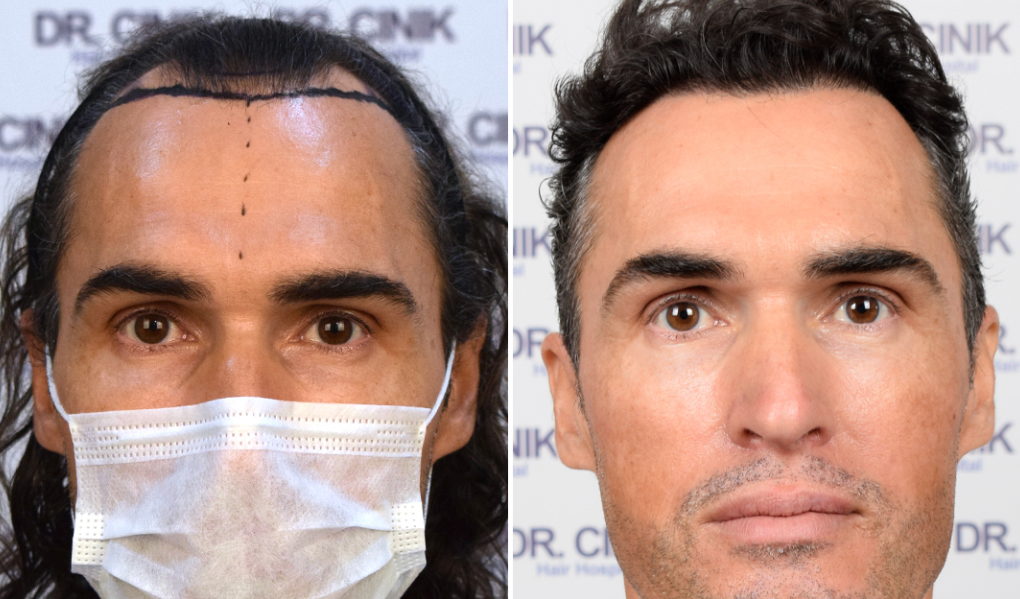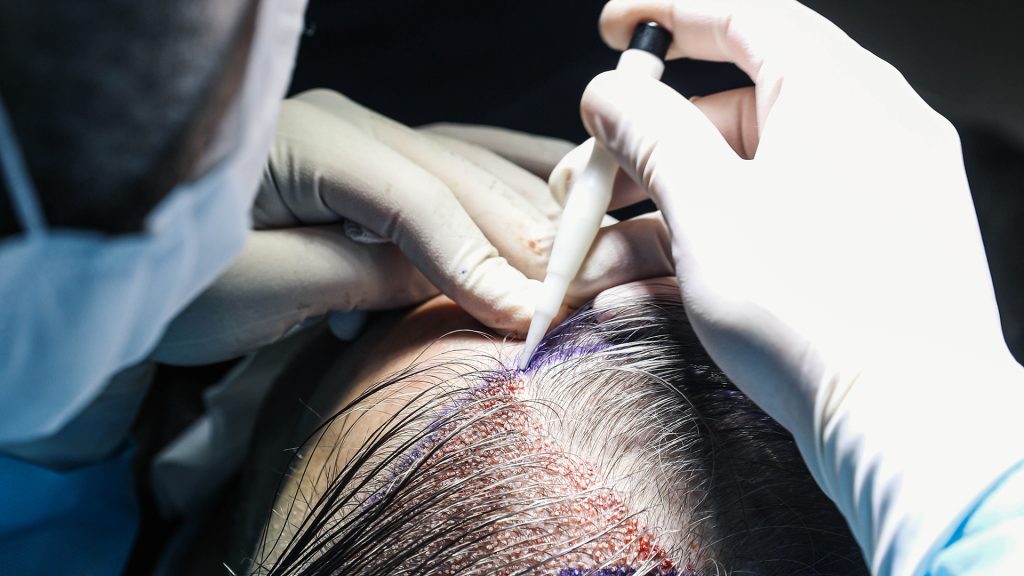
DHI hair transplant in Turkey
Opt for innovative hair transplant
DHI hair transplant is one of the most advanced techniques in the world. The hair transplant technique is designed for low to middle-grade alopecia. Performed in Turkey, this hair transplant guarantees a natural and permanent result.
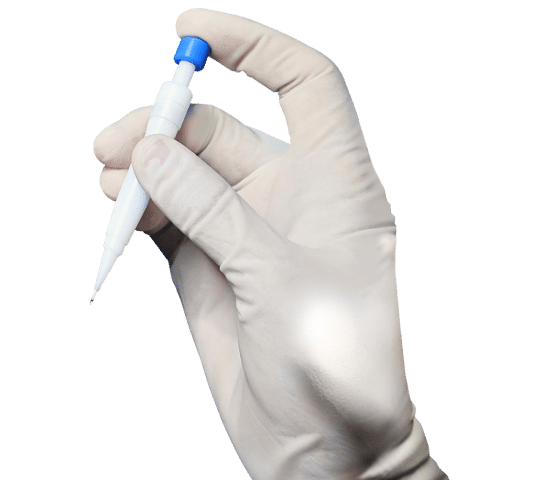



The DHI hair transplant is one of the most advanced techniques in the world. This implantation technique is designed for mild to moderate alopecia. After the follicle extraction phase, which is performed under local anesthesia. The surgeon uses a Choi pen to implant the follicles into the recipient area. There is no need to open the channels with a sapphire and/or metal blade. The DHI technique guarantees a rapid recovery. In some cases, it also avoids shaving the recipient area. This procedure is ideal for achieving a natural, harmonious and balanced result. Trust Dr. Cinik with your hair or/and beard transplant. Don’t hesitate to contact us for a free consultation! +905422340034, contact us for free consultation.
The DHI hair transplant technique in a nutshell
Direct Hair Implantation (DHI) is an innovative hair transplantation technique derived from the FUE technique. In FUE hair transplant, follicular units are extracted and implanted in the recipient area after opening channels in the scalp.
With a DHI hair transplant, the surgeon uses a Choi implant pen to create these channels and implant follicles in one step. This technique saves time without compromising results.
The procedure is gentle while promoting patient comfort and improving recovery

The Choi implant pen at the heart of the DHI technique
The Choi Pen is a precise surgical tool used in DHI hair transplantation. Its needle and micro-motor facilitate the extraction of the graft and allow for a natural result.
The Choi Implant Pen allows both the incisions to be made and the grafts to be implanted, which has the advantage of keeping the grafts out of the patient’s body for as little time as possible, especially in comparison with a conventional FUE.
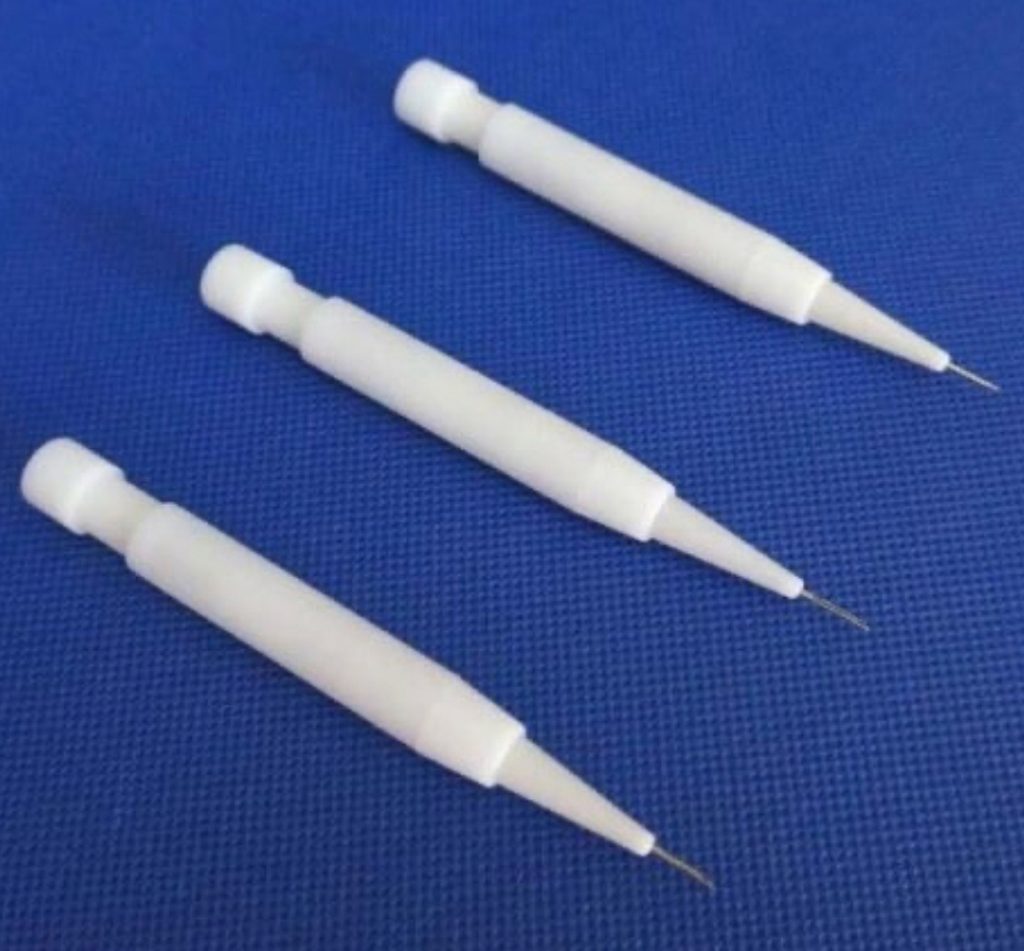
The cost of a DHI hair transplant with Dr Cinik
We do not charge per graft, we always try to implant the maximum number of grafts per patient. An entire team is dedicated to you.
By entrusting your DHI hair transplant to Dr Emrah Cinik, you will save up to 70% compared to the rates applied in Italy, or Switzerland without compromising the success of your procedure. By using a leading surgeon in the field of hair transplantation, such as Dr Cinik, you will benefit from high-quality services and care. At every step of the transplant process, the medical team of Dr Cinik’s clinic accompanies each patient personally.
DHI hair transplants are 20% more expensive than FUE hair transplants. A high-quality DHI costs between €10,000 to €20,000 in Italy. The higher price tag is justified as DHI hair transplant requires more effort and time.
DHI
3590 €
All-inclusive DHI Package
- Local anesthesia with air pressure
- Accommodation
- VIP Transfer
- Consultation
- Blood Test
- PRP Treatment
- Medication & Care Products
- Hair and Scalp Analysis
- Translator
- First Hair Wash
- Post-Op Service

Free hair diagnosis
Want to know if hair transplantation in Turkey is right for you? Get all the answers to your questions with our free hair diagnosis!
Results after a DHI transplant
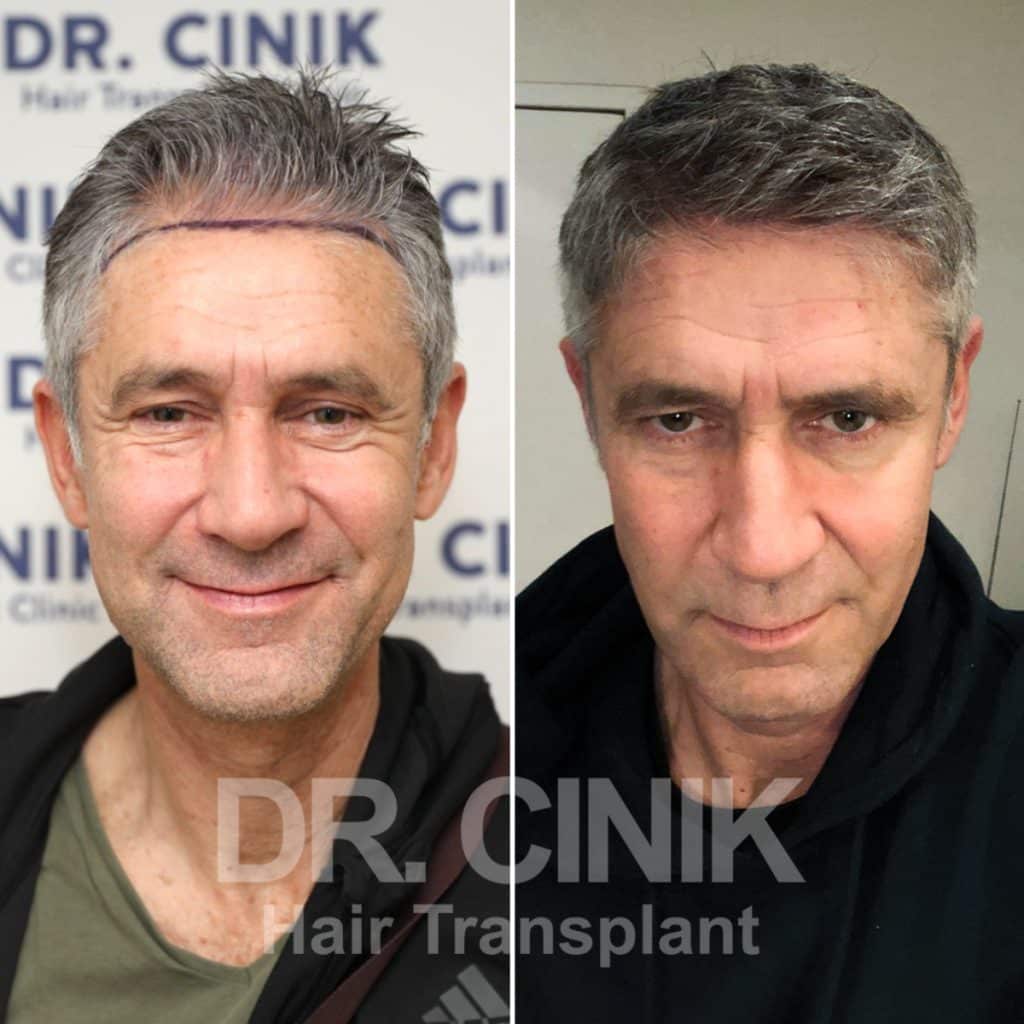
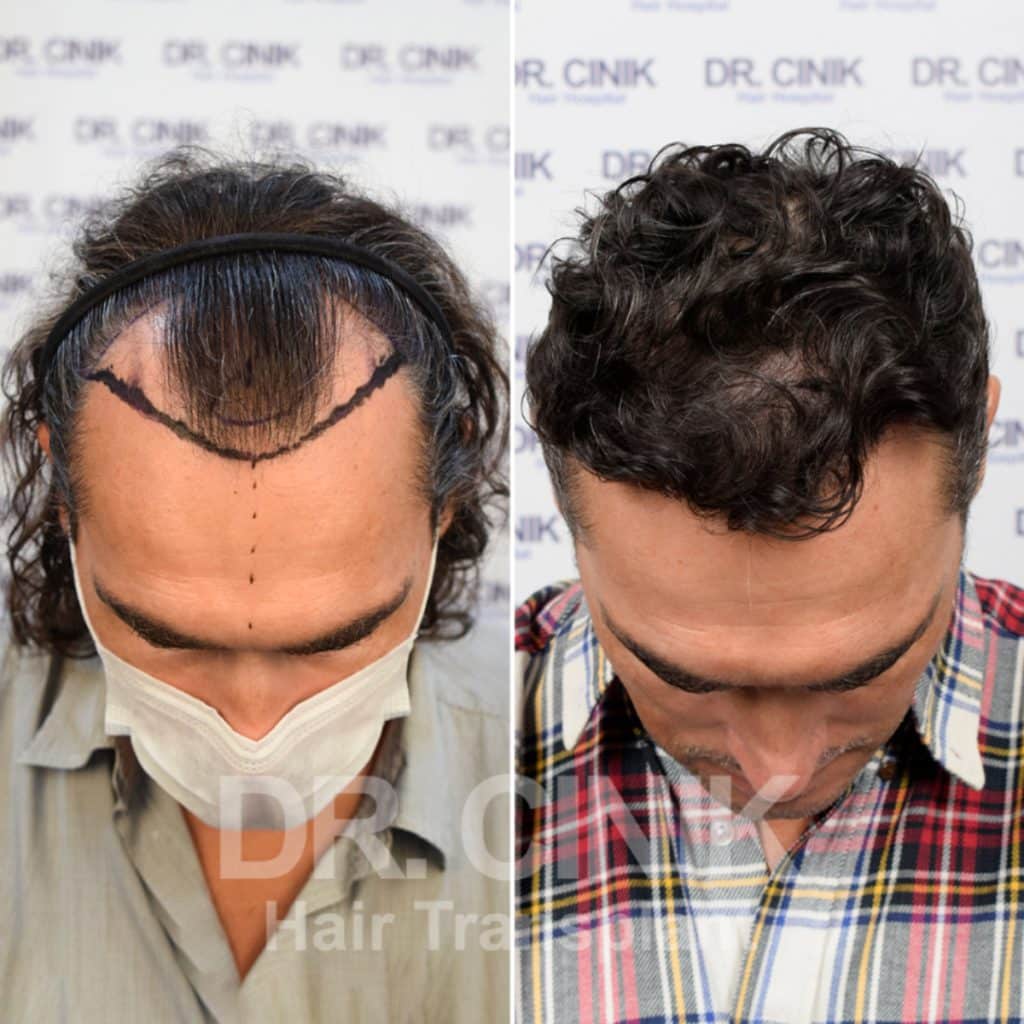
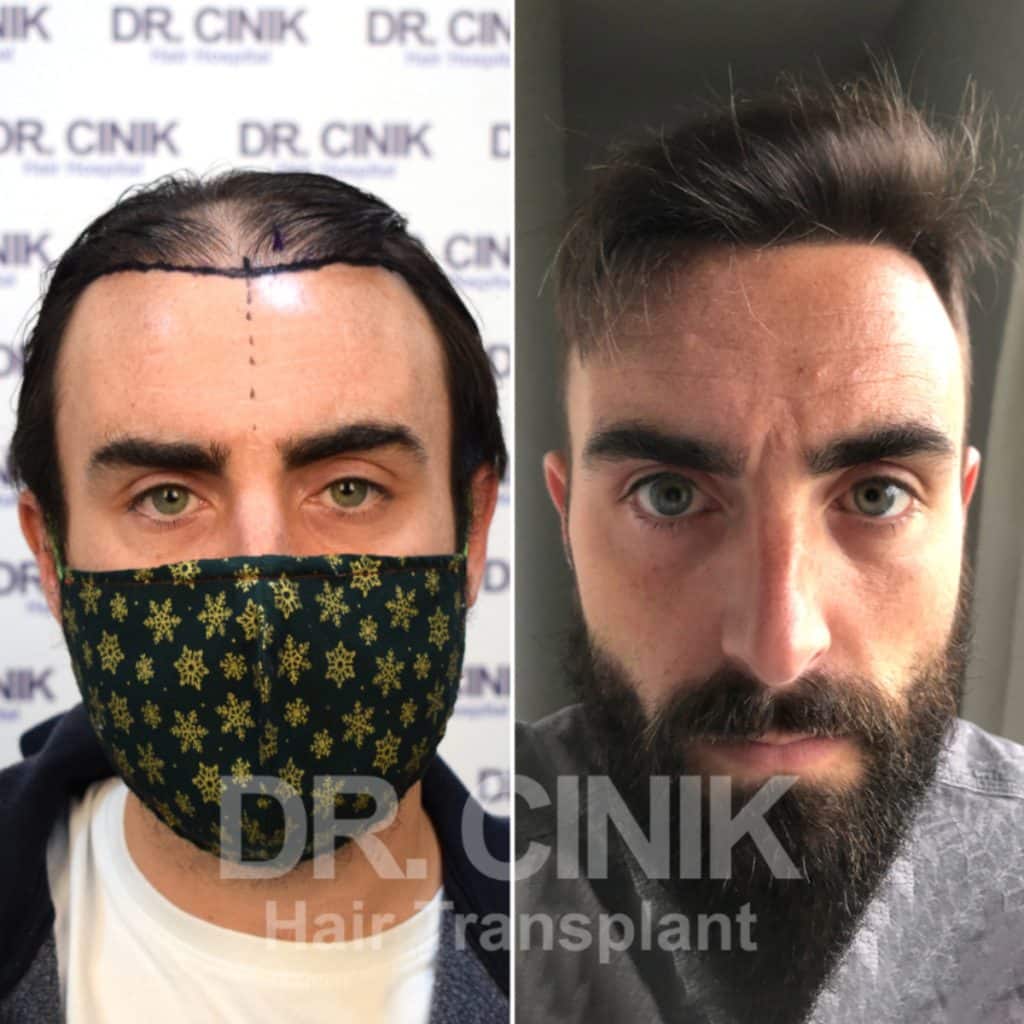
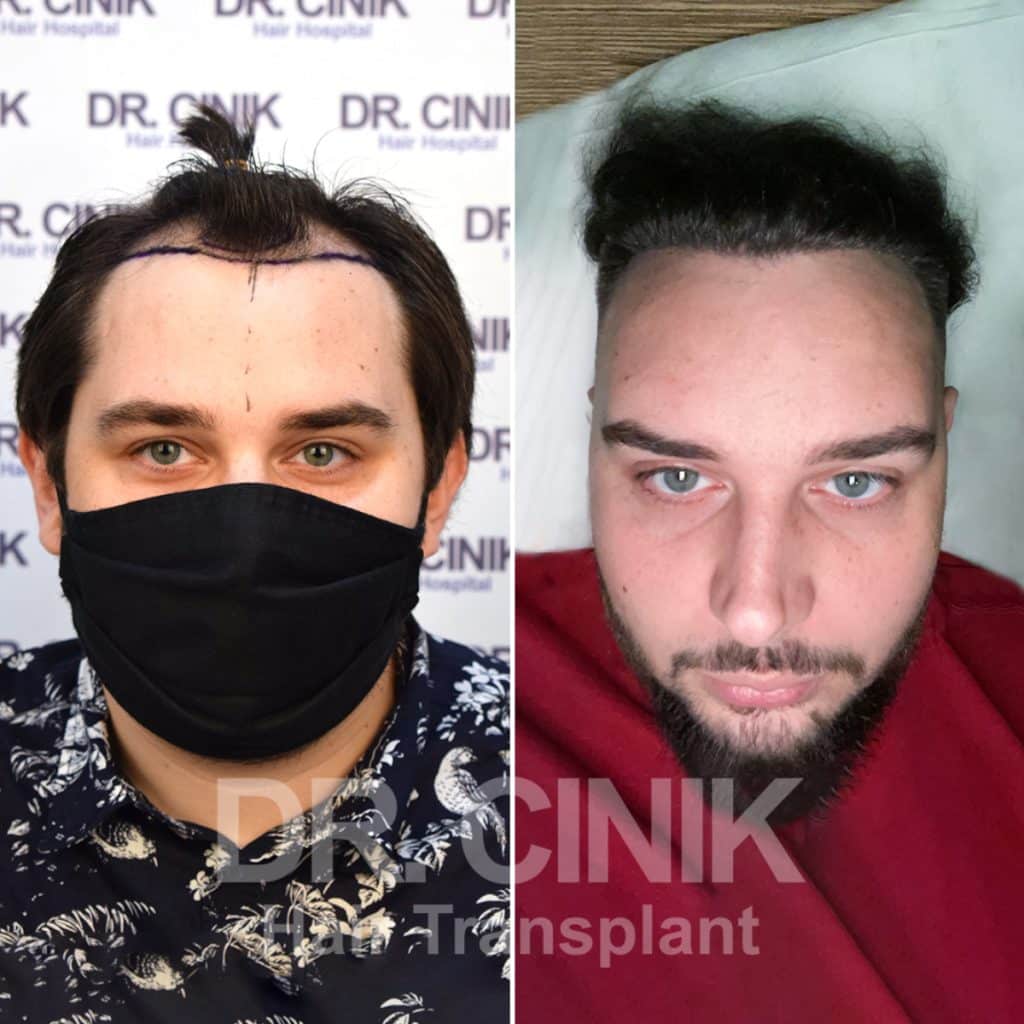
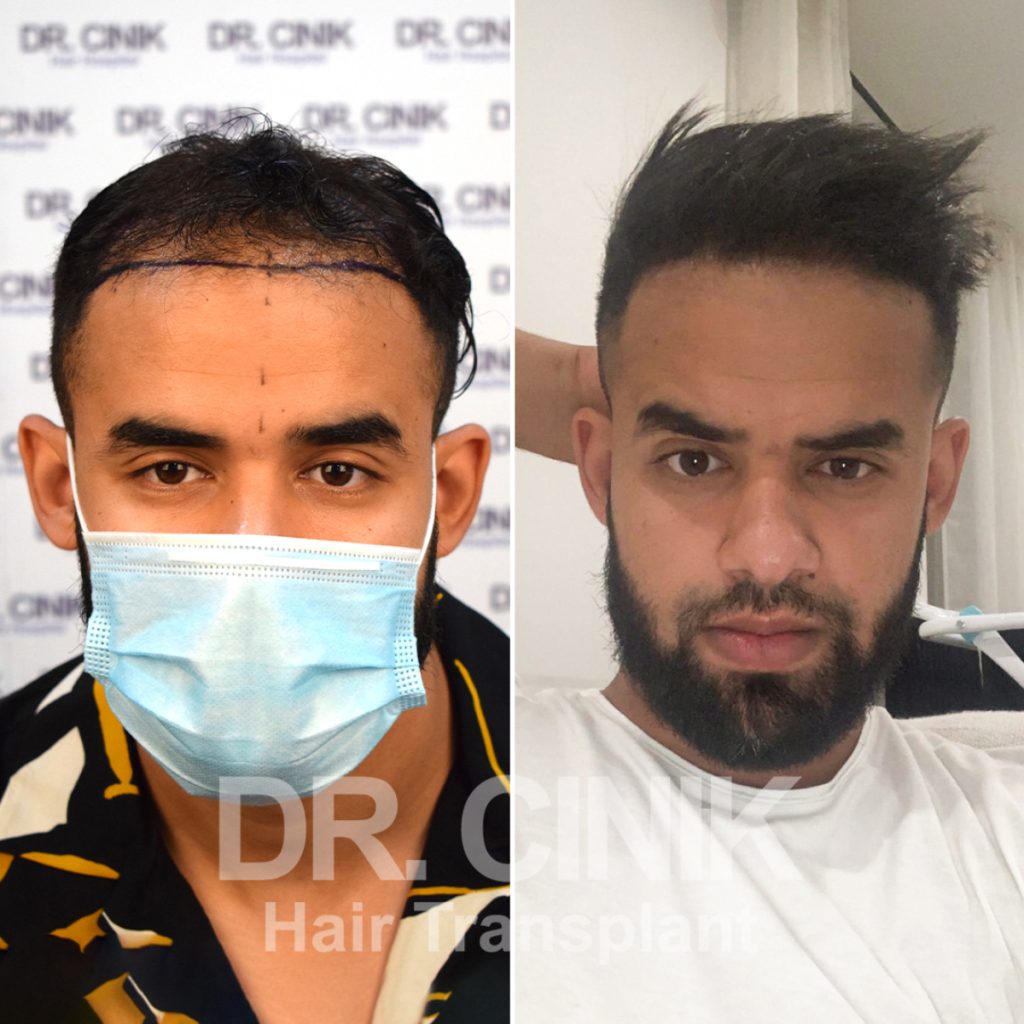
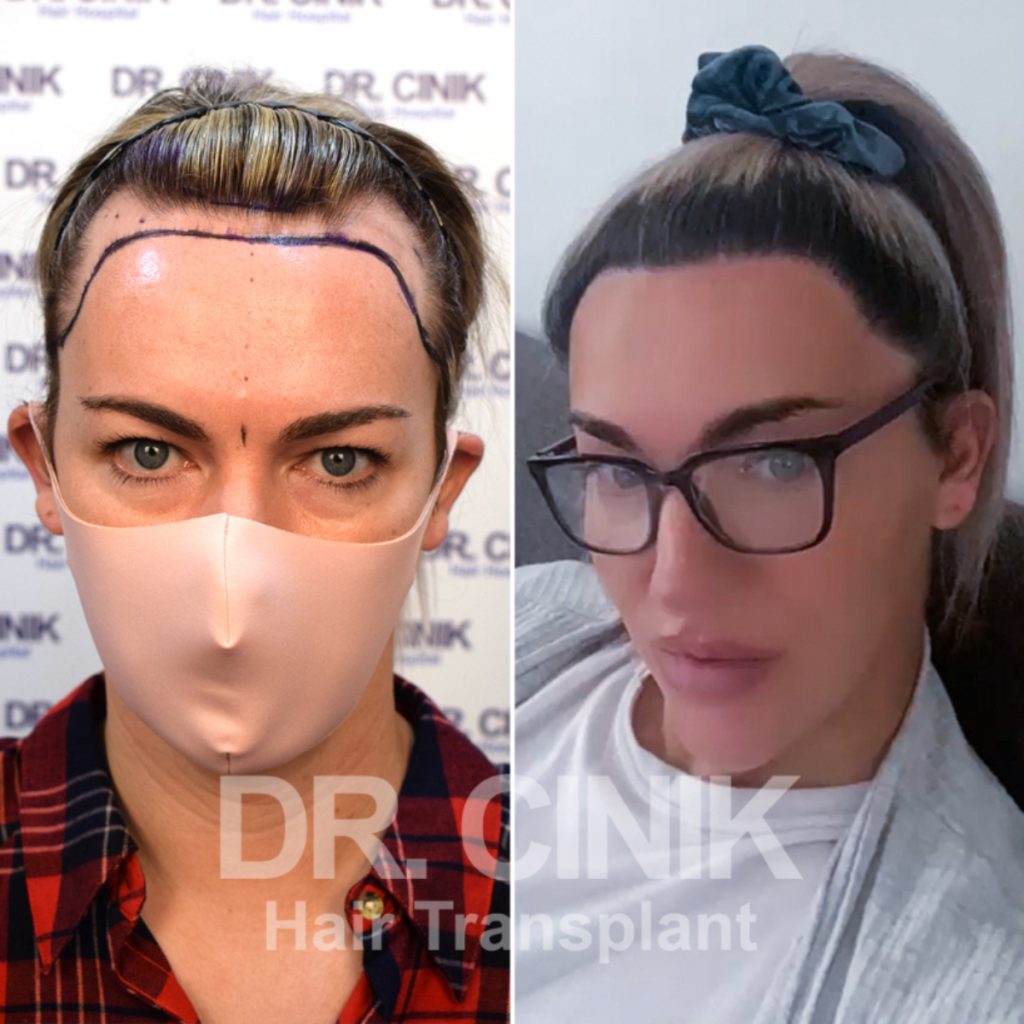
The steps of a DHI hair transplant:
The benefits of the
DHI technique:
The DHI hair transplant technique has the advantage of promoting rapid recovery.
With the use of the CHOI pen, this method of hair transplantation allows for control of the angle, depth and direction of growth of each follicle.
This safe procedure, which is performed under local anaesthesia, is ideal for achieving a natural, harmonious and even results.
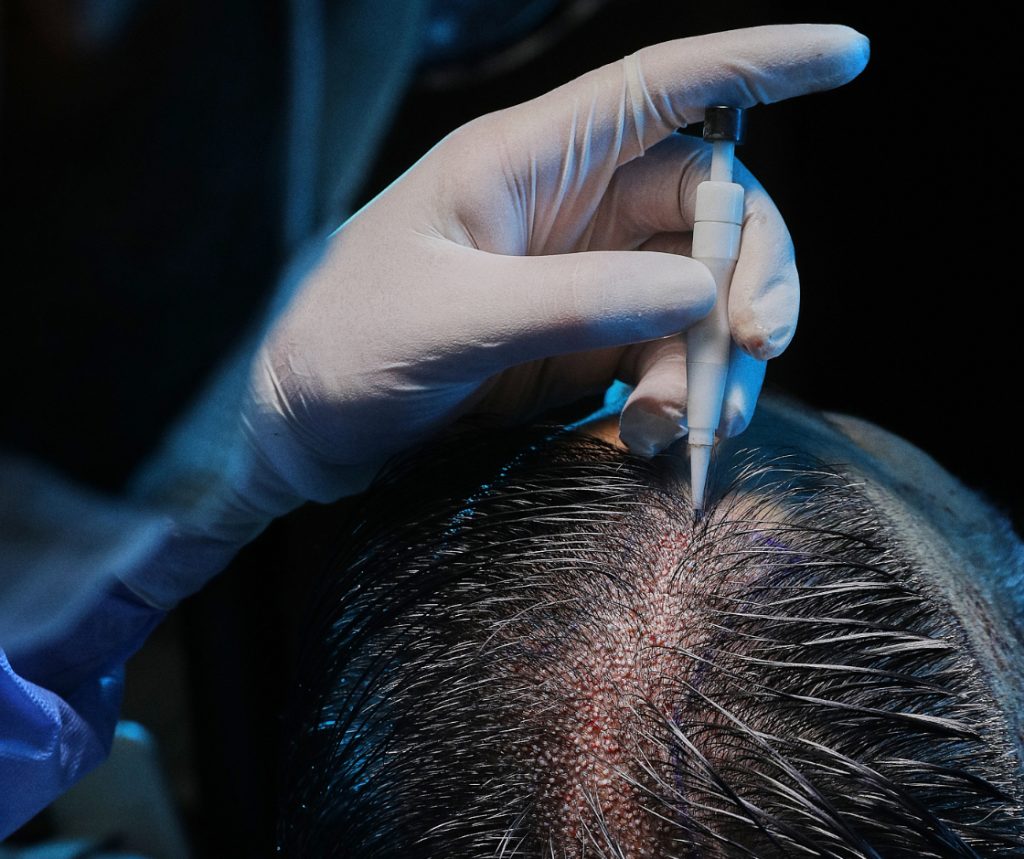
Book now
To get detailed information about our services and get a free online consultation, you just need to book a consultation now.
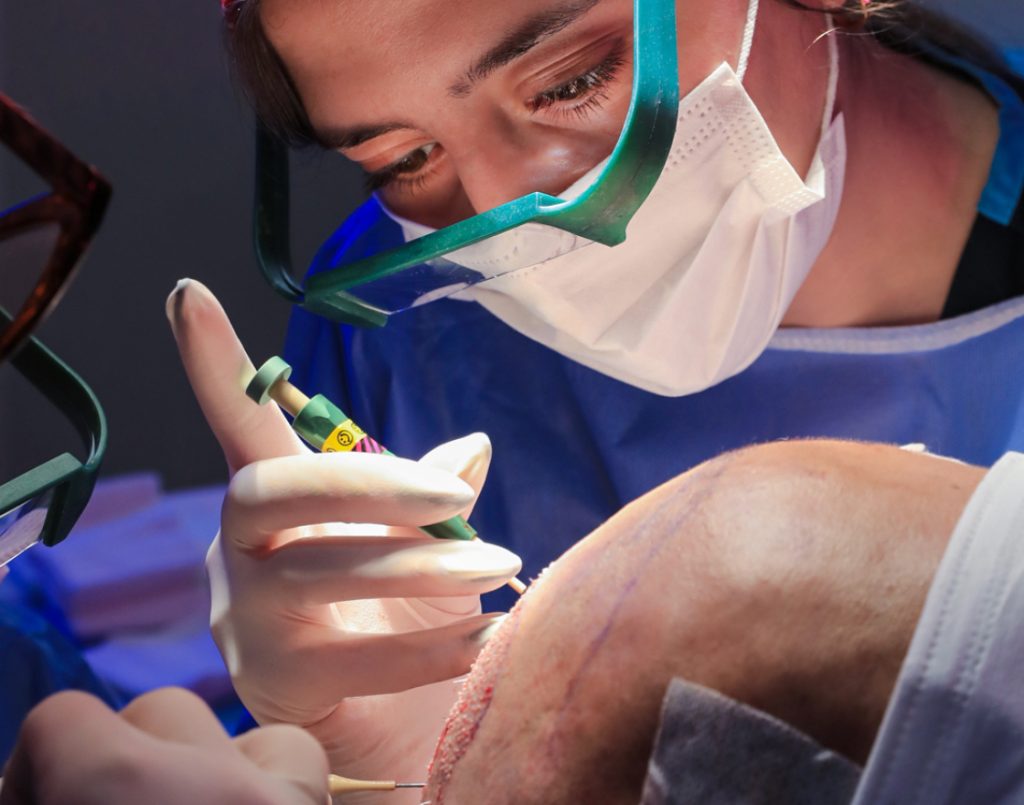
The disadvantages of
the DHI technique:
If implanting the grafts one by one allows to obtain a very natural result, this technique somewhat increases the time necessary for the good progress of the intervention.
FUE Sapphire or DHI:
which technique to choose based on your needs
Sapphire FUE and DHI both provide unique benefits. Despite some common misconceptions, either method can be employed regardless of the stage of your hair loss. The decision between Sapphire FUE and DHI is not solely based on the extent of your baldness, but also takes into account other factors that are unique to each individual.
To establish which technique is most suitable for your specific circumstances, it’s advisable to consult with Dr Cinik. With his vast expertise, he will be able to guide you towards the most fitting approach for your case and offer you a tailored recommendation.
Why perform your DHI hair transplant in Turkey?
For your hair transplant to be successful, the surgeon’s experience and the technologies used must be part of your criteria. Turkey is one of the most renowned countries for its surgeons’ excellence and infrastructure quality.
Having your hair transplant done in Turkey ensures you get the best care and services.
At Dr Emrah Cinik’s clinic, you will benefit from individual follow-up, innovative technologies, and a medical team renowned for their outstanding efficiency.
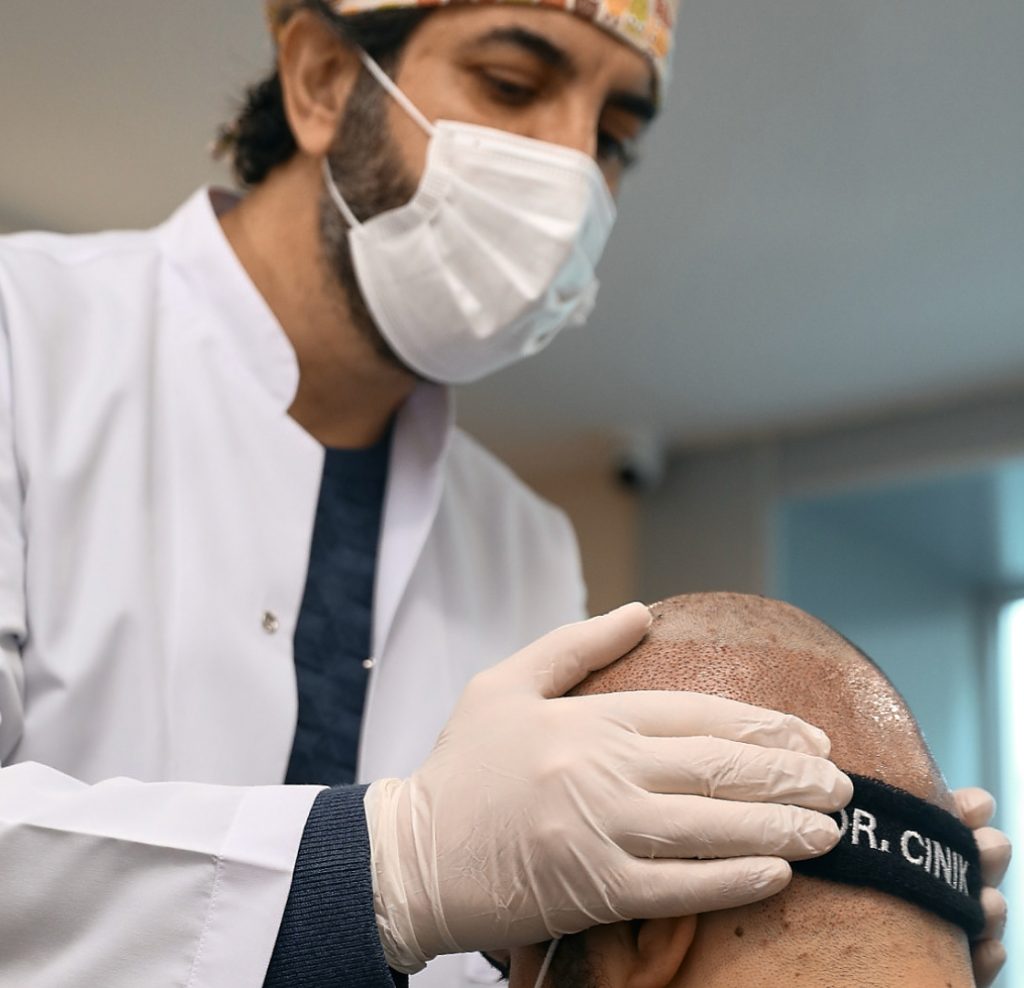
Frequently Asked Question
on DHI hair transplant
Is it possible to perform your hair transplant without shaving or with partial shaving with the DHI technique?
The DHI hair transplant technique does not always require shaving the recipient area. However, it is essential to shave the donor area. Few patients are eligible for a hair transplant without shaving, after a capillary analysis Dr Cinik informs you of the options available.
What is the success rate with this technique?
DHI hair transplants have an excellent success rate. To ensure your hair transplant goes smoothly, visit a reputable clinic such as Dr Emrah Cinik’s.
How long does it take to see results?
The timeline of results after a DHI hair transplant is a crucial aspect that Dr. Cinik explains in detail to his patients. It’s important to understand that the regrowth of transplanted hair is a gradual process that occurs over several months.
Immediately after the procedure, patients can observe the implanted grafts. However, it is normal for these hairs to fall out in the weeks following the surgery. This post-operative shedding, known as “shock loss,” is a natural part of the process and should not cause concern.
The first signs of regrowth are typically visible between 3 and 4 months after the procedure. At this stage, fine hairs begin to emerge from the transplanted follicles. This initial growth phase can vary from patient to patient, with some seeing results earlier than others.
Around the 6th month, more significant results start to appear. The transplanted hairs become thicker and longer, providing a noticeable improvement in hair density. It’s often at this stage that patients begin to truly appreciate the changes in their appearance.
The final result of the DHI transplant is generally fully appreciated between 12 and 18 months after the procedure. During this period, the transplanted hairs continue to grow, thicken, and blend harmoniously with the existing hair. This is when the density, texture, and natural appearance of the new hair reach their peak.
Dr. Cinik emphasizes the importance of patience during this process. Each patient may experience a slightly different regrowth timeline, influenced by factors such as age, the quality of the transplanted follicles, and adherence to post-operative care. Throughout this period, Dr. Cinik ensures regular follow-ups, offering advice and reassurance to his patients to optimize long-term results.
Is DHI suitable for all hair types?
The versatility of the DHI technique is one of its major strengths, making it adaptable to a wide variety of hair types. Dr. Cinik, with his extensive expertise, is able to adjust the technique to meet the specific needs of each patient, regardless of their hair type.
For fine hair, DHI offers the advantage of very precise implantation, allowing for optimal density even with more delicate follicles. Dr. Cinik can adjust the depth and angle of implantation to maximize the volumizing effect for fine hair.
Thick hair also benefits from DHI. The technique allows for the strategic implantation of larger grafts, ensuring a natural distribution and avoiding an overly dense or artificial appearance. Dr. Cinik uses his aesthetic sense to create a harmonious transition between treated and untreated areas.
For curly or coily hair, often associated with curved follicles, DHI presents a significant advantage. The precision of the implantation allows Dr. Cinik to respect the natural curvature of the follicles, ensuring growth in the right direction and a final result that perfectly matches the patient’s natural texture.
Gray or white hair can also be effectively treated with DHI. Although these hairs may be more delicate to handle due to their lack of pigmentation, the precise DHI technique allows Dr. Cinik to transplant them successfully, taking extra precautions to ensure their viability.
It is important to note that while DHI is adaptable to all hair types, the treatment plan is always personalized. Dr. Cinik evaluates each case individually, considering not only the hair type but also existing density, the degree of hair loss, and the patient’s aesthetic goals to develop the most effective strategy.
Are there any contraindications to DHI?
While DHI hair transplantation is generally a safe and effective procedure, there are certain contraindications and situations where caution is advised. Dr. Cinik always conducts a thorough evaluation of each patient to ensure their eligibility for this procedure.
Blood clotting disorders are a significant contraindication. Patients suffering from these disorders or taking anticoagulants must undergo a comprehensive medical evaluation before considering DHI. In some cases, treatment adjustments under medical supervision may be necessary.
Certain scalp conditions, such as active psoriasis or fungal infections, can temporarily contraindicate DHI. Dr. Cinik generally recommends treating these conditions before considering a hair transplant to ensure the best chances of success.
Patients with autoimmune diseases affecting the scalp, such as alopecia areata, may not be good candidates for DHI. These conditions can impact graft survival and the long-term outcome of the procedure.
Unstable or progressive hair loss can also be a relative contraindication. Dr. Cinik carefully assesses the progression of hair loss and may recommend stabilizing treatments before considering a transplant.
Unrealistic patient expectations are considered a psychological contraindication. Dr. Cinik ensures that patients have a realistic understanding of the possible results and are emotionally prepared for the procedure and recovery process.
Finally, certain general medical conditions, such as uncontrolled diabetes or severe cardiovascular issues, may require further evaluation and additional precautions.
Dr. Cinik emphasizes the importance of a thorough preoperative consultation and full disclosure of the patient’s medical history. This approach helps identify any potential contraindications and ensures the safety and success of the procedure for each patient.

Free hair diagnosis
Want to know if hair transplantation in Turkey is right for you? Get all the answers to your questions with our free hair diagnosis!


